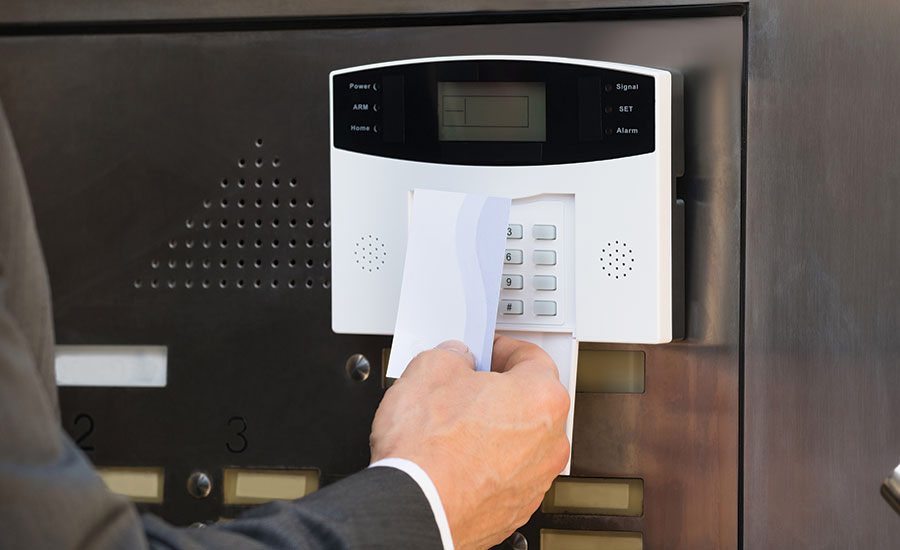Security Magazine: The Future of ID Management in Healthcare
June 30, 2020
By Brooke Grigsby
Read the original article via
Security Magazine.

Hospitals are where people go to seek treatment, recover, and address critical injuries. It is the place where doctors, nurses, and other healthcare providers devote themselves to helping people who need medical attention. In addition to this critical focus, a hospital also has to protect against unauthorized access, theft of medications or sensitive patient information and guard against workplace violence, which affects hospitals more than other industries.
At the same time, they must maintain a level of accessibility and openness, which presents difficulties as it relates to security.
The onset of COVID-19 has introduced new challenges related to patient monitoring, reducing the spread of infection and maintaining a separation between those who have contracted the virus and those who have not. As the world has experienced a shift in how day-to-day operations are conducted, security manufacturers have begun tailoring their solutions to address these new demands.
When dealing with an environment as complex as a hospital, it's crucial to understand the many facets that go into hardening the security of the facility, while simultaneously maintaining an open environment dedicated to patient care.
How access fits
Whether it is in the heat of an emergency or simply going about a normal day, hospital employees must have frictionless access requiring minimal user interaction to secure areas that they are authorized to enter. This fact requires identity management and access control systems that are easy to use, fast and reliable. Various smart card readers and access control solutions, utilizing RFID, NFC, or UHF technologies, can be implemented to fit this environment. The locking mechanisms that are chosen for hospital entryways should incorporate these same aspects.
The doors that need to be protected in a hospital can vary greatly in their needs for locking mechanisms and access systems, ranging from external-facing entryways to smaller cabinets that contain sensitive pharmaceuticals. These could be implemented as new areas of a hospital are constructed or they might need to be retrofitted onto current rooms to replace outdated equipment. In any case, the solutions need to work well with the hospital's needs and current systems.
In addition to monitoring employee access rights, hospitals also need to track critical assets to ensure they haven't been lost or stolen. This can include tracking where wheelchairs and gurneys are stored on the campus or tagging packages that are at high risk of theft, such as medication like painkillers. These and other customizable applications can be accomplished by using RFID and NFC tags.
The same solutions can be used to monitor the location of infants or patients at risk for wandering, or to trace the movements of a patient who may be infected with COVID-19.
Smart card credentials and readers can handle allowing or denying access, but they are even more powerful and agile when paired with a physical access management platform. These platforms can track movements and easily change parameters around access for certain users or times of the day. The specific needs for access points, which may change over time, could impact the locking mechanism needed for one doorway or another throughout a hospital environment.
The future is touchless
While accessibility has always been a goal of healthcare access control and ID management, COVID-19 has further exasperated this need. With the threat still genuine, frictionless, hands-free solutions are a crucial part of any organization's efforts to create a healthier, more hygienic environment and healthcare facilities are no exception.
A well-designed access control system should allow people to go about their daily lives freely, but still provide peace of mind when it comes to security needs. Regardless of the ease of a platform, it needs to deliver an adequate level of protection to eliminate unauthorized access.
Mobile applications leverage Bluetooth and capacitive technologies to allow for complete frictionless access. Loaded on to a user's smart device, the mobile application acts as a physical credential. A doctor or nurse can keep their mobile device in their pocket, then wave their hand near the reader and the door unlocks. This is especially useful in fast paced settings, such as a hospital, where frictionless solutions can streamline operational efficiencies. Users are also less likely to lose their phone than they are a traditional access control card, making this a far more secure option that takes advantage of the constant connectivity in today's world, while simultaneously reducing touchpoints and, in turn, the risk of spreading infection.
Frequent touchpoints, like punch clocks, can easily be replaced by contactless technology. Smart card readers with multiple frequency options and a keyboard emulation are perfect for facilities that use a mixture of techniques for logical access. Integrating easily with most time and attendance systems, employees tap the card to the reader to clock in for the day.
Contact tracing
Contact tracing within access control is another way to proactively and reactively protect patients and visitors. If a person enters a hospital and is later found to be symptomatic of an illness, some access control systems can pull a report of everyone who entered the same door who can then be notified to either get tested or self-quarantine. While this is useful during the days of COVID-19, it can also be used for other applications, such as seasonal influenza.
When choosing to invest in any type of frictionless access control, it is vital to keep in mind that the system needs to adhere to your internal requirements and must have room to grow over time. It is also important to note that not all systems come equipped with contact tracing.
But overall, frictionless access control will continue to see increased demand following the pandemic, as more organizations move away from older technologies and make way for more secure, less complicated techniques.
Solutions to meet these goals
The goal in access control within healthcare environments is very similar across all applications — keeping the wrong people out while letting the right people in.
But concerns related to COVID-19 have forced every market to re-examine their identity management and access control strategy, with new tools being released regularly to combat the spread of infection.
While there are many ways to approach identity management, one thing is for certain: it is an ever-changing landscape that is constantly improving. With technological trends like touchless access control and contact tracing gaining traction, the healthcare industry will continue to see significant change in how it approaches identity management to protect patients, employees and assets.
 Brooke Grigsby
Brooke Grigsby